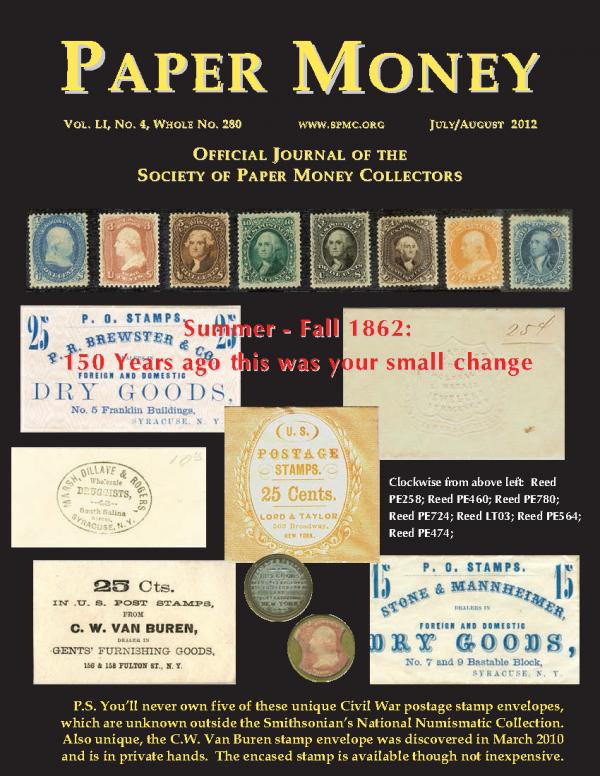Please sign up as a member or login to view and search this journal.

Table of Contents
The Forced Issue Notes of the Bank of Louisiana . . . . . . . . . 243
By Steve Feller
Notes from North of the Border: Completion Approaching . . 256
By Harold Don Allen
Tax Anticipation Scrip during the Great Depression . . . . . . . 259
By Loren Gatch
The Paper Column: Spelling Created Trouble with Nationals . . . . . .268
By Peter Huntoon & Bob Liddell
Mrs. Emma Reed, National Bank President . . . . . . . . . . . . 277
By Karl Sanford Kabelac
About Nationals Mostly: The FNB of Farmersville, TX . . . . . . 278
By Frank Clark
Edgar Allan Poe Signed Checks . . . . . . . . . . . . . . . . . . . . . . 280
By Michael Reynard
Mrs. S.R. Coggin, National Bank President . . . . . . . . . . . . . . 283
By Karl Sanford Kabelac
A Theoretical Model of Mormon Currency of Kirtland, OH . . . 285
By Douglas A. Nyholm
The Buck Starts Here: The First Greenbacks . . . . . . . . . . . . 297
By Gene Hessler
Small Notes: New Ones on Letter-Seal 1928 FRN Plates . . . 293
By Jamie Yakes
Civil War Stamp Envelopes Circulated as Small Change . . . 298
By Fred L. Reed
A checklist of Civil War Postage Stamp Envelopes . . . . . . . . 306
By Fred L. Reed
SOCIETY & HOBBY NEWS
Information and Officers . . . . . . . . . . . . . . . . . . . . . . . . . . . . . . . . . . . . . . . .242
Your Subscription to Paper Money Has Expired If . . . . . . . . . . . . . . . . . . . 246
New Members . . . . . . . . . . . . . . . . . . . . . . . . . . . . . . . . . . . . . . . . . . . . . . . .273
President’s Column by Mark Anderson . . . . . . . . . . . . . . . . . . . . . . . . . . . . .292
Back of the Back Page with Loren Gatch and Fred Reed . . . . . . . . . . . . . .317
The Back Page with Paul Herbert and John Davenport . . . . . . . . . . . . . . . .318


